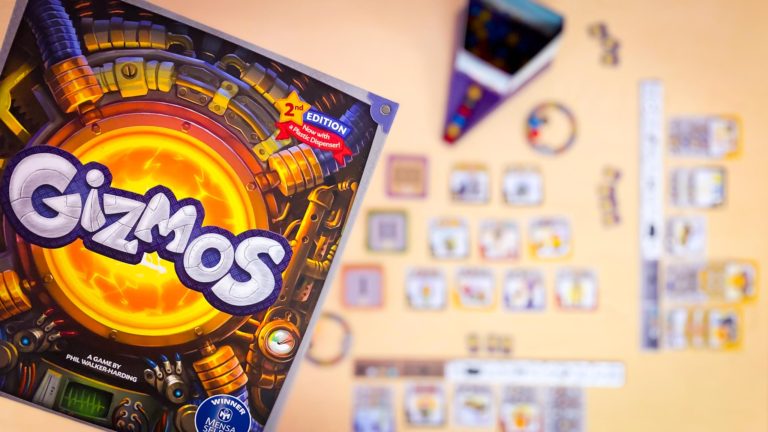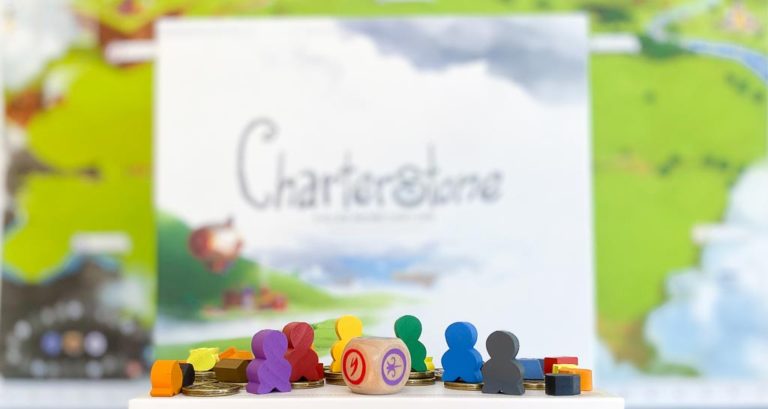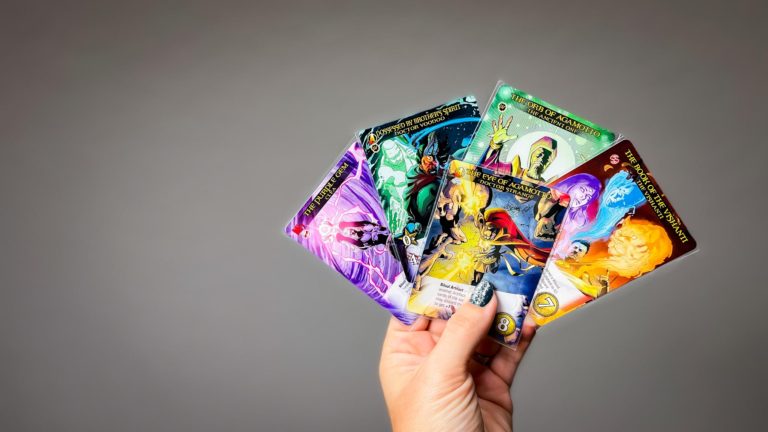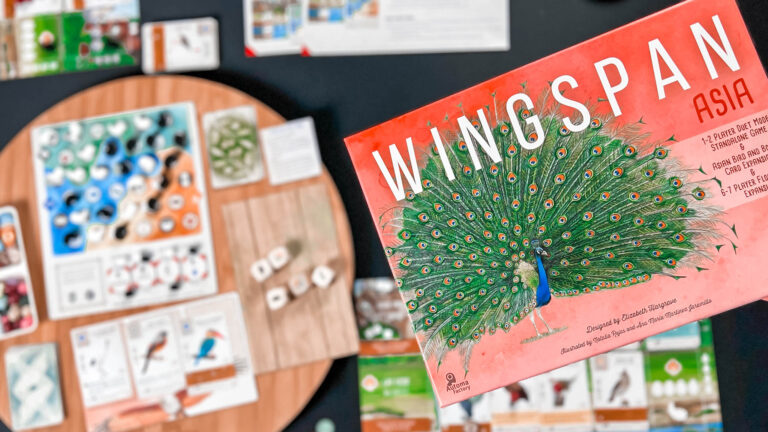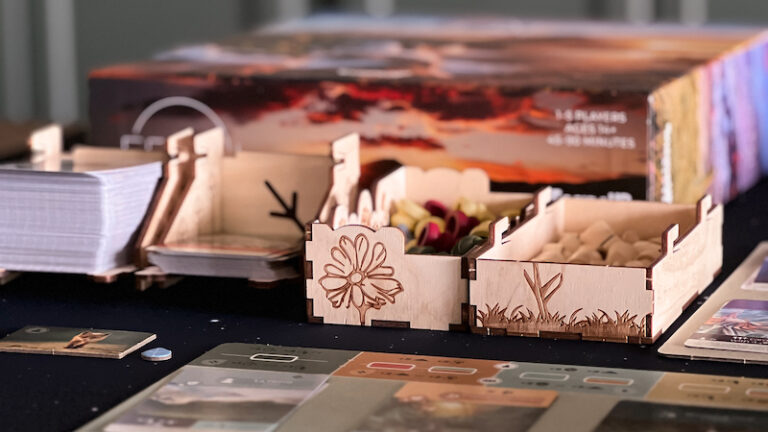Do you have a kid that loves dinosaurs?
All of our kids are obsessed. Like, don’t you dare call that a Brontosaurus, it’s an Apatosaurus, obsessed. And as parents, we’re all about it.
So when we found this CardLine: Dinosaurs game from Bombyx studio with Asmodee we had to get it.
How do you play?
The game comes with 110 unique cards featuring dinosaurs and other prehistoric animals. The cards are double sided. The top side features the artwork of the animal along with its name and the backside has the same information with characteristics (weight, length) added.
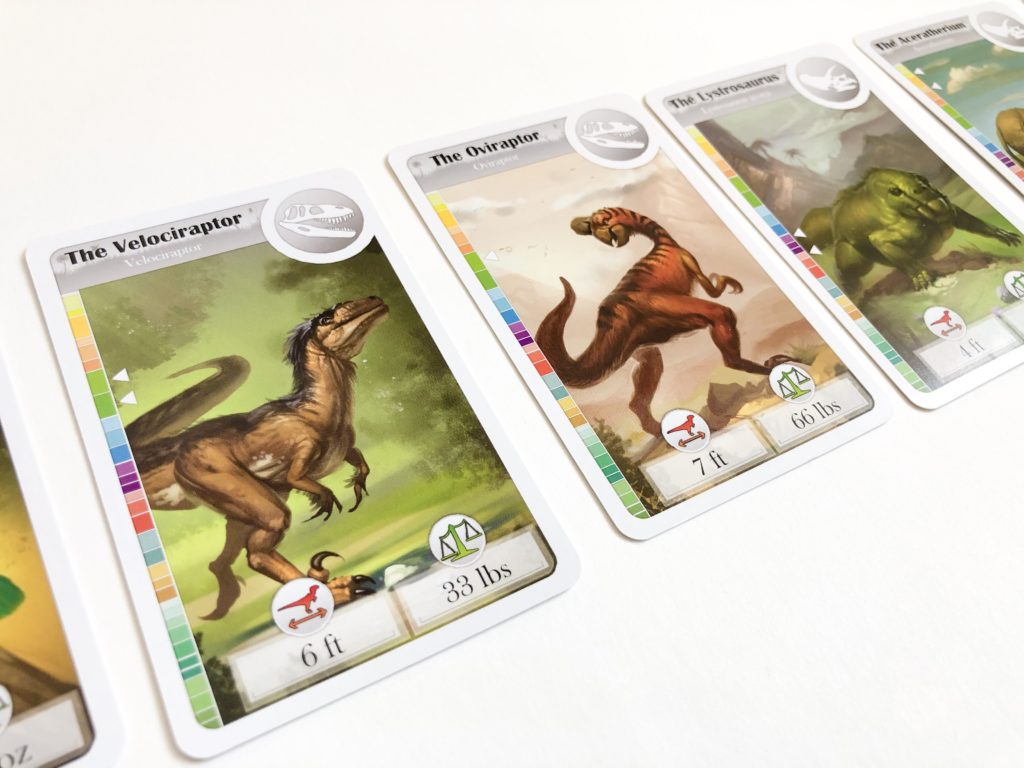
At the start of the game, everyone is dealt an agreed number of cards with the characteristic sides down. The remaining cards become the draw pile.
The top card of the draw pile is placed in the center, characteristics side up and begins the card line.
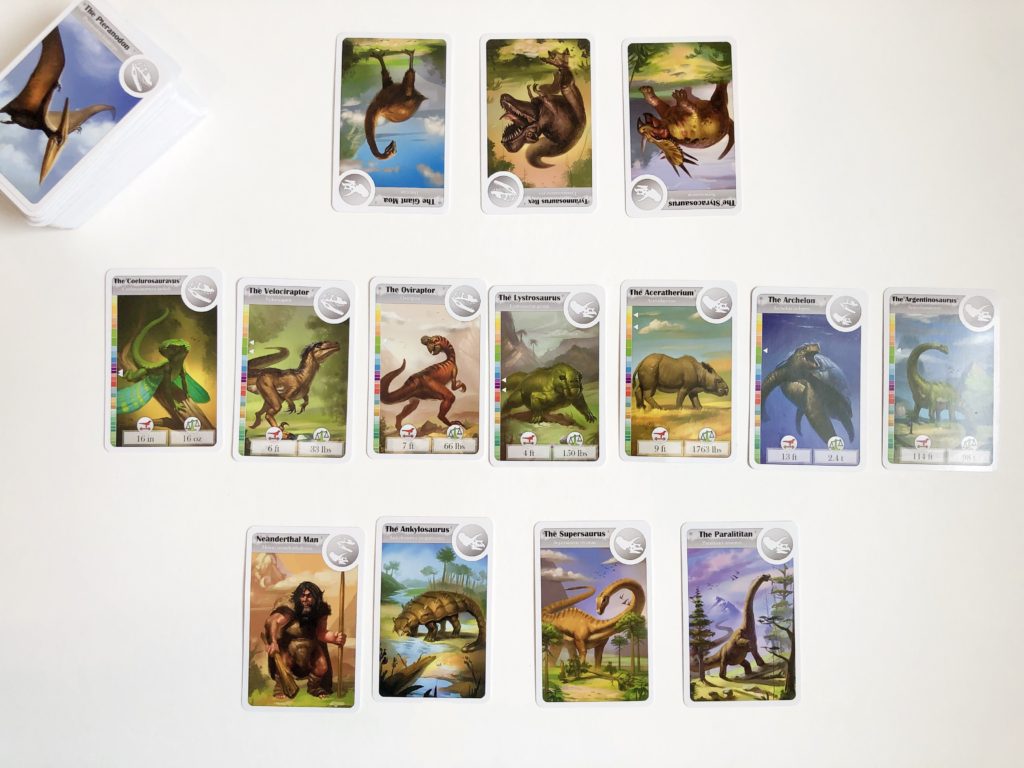
On your turn it is your job to place one of your cards correctly into the card line according to one of the characteristics: weight or length.
So if you are arranging the animals by weight, you will judge which one of your cards you feel is heavier or lighter than the card(s) in the card line and place it where you feel it belongs.
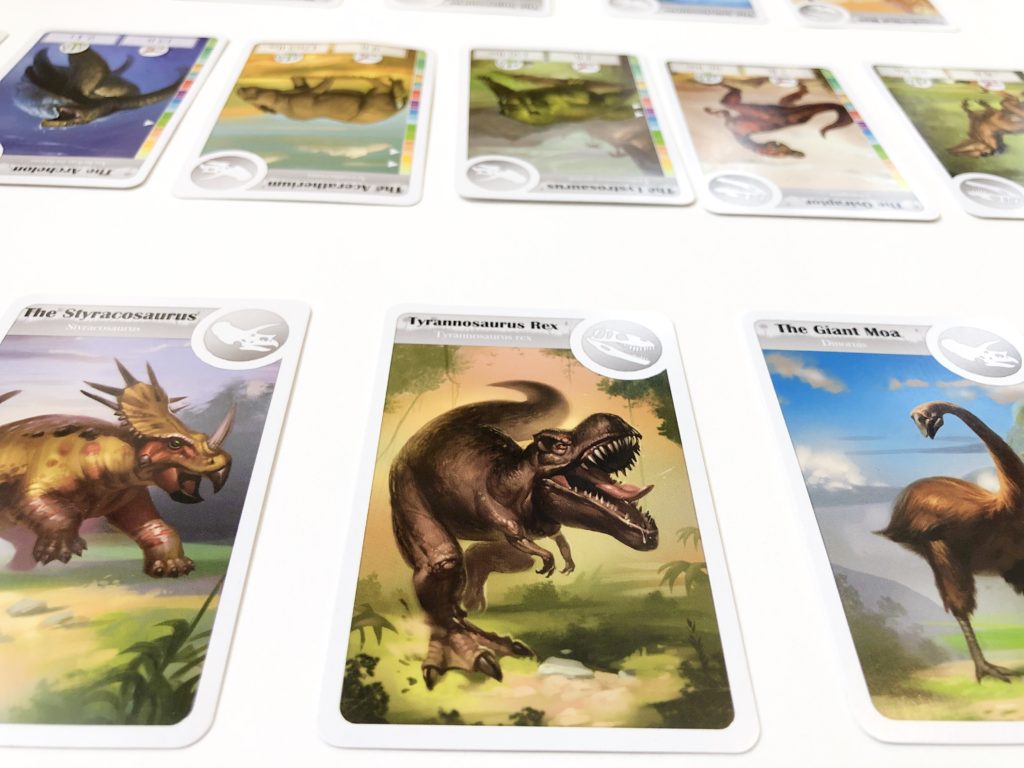
Once placed, flip it over. Were you correct? Great! You’ve successfully played your card. Were you incorrect? Bummer! Return that card to the box and draw a new card from the deck and place it in front of you.
The first person to successfully play all of their cards is the winner!
What do we think?
What I like about this game is that while the concept is simple, it is actually quite difficult without being too frustrating for our kids. The art is done in such a way that every animal looks about the same size so you can’t just assume because something looks big that it actually is.
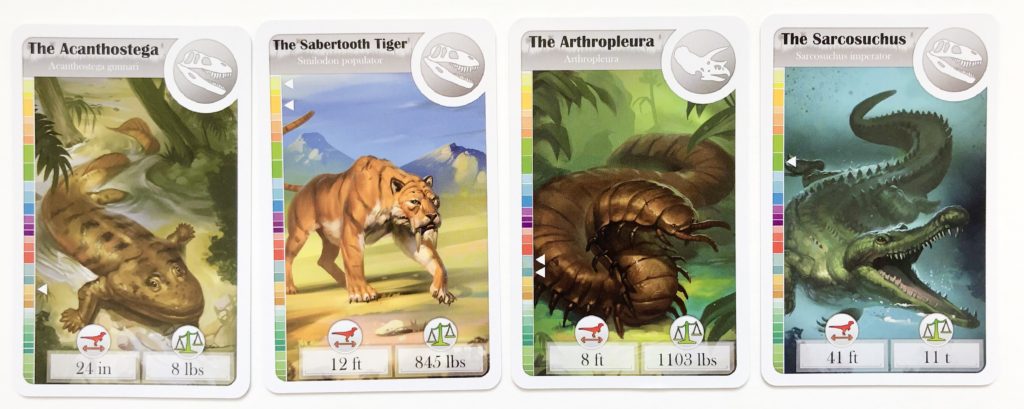
This definitely gives a leg up to those those who know their dinos. Yet there are lots of animals that are of similar size so it can get a bit tricky.
There’s still a fair amount of guessing involved. There are simply so many prehistoric animals presented that it is nearly impossible to know them all so you’ll have to use your best judgement.
As a game, I really like the components. The art is nice, the cards are good quality, and the tin it all comes in is sturdy with an insert that actually holds the cards in place. This is a major bonus so you don’t have to play 110 card pick up every time you open the box. There’s also two slots for the cards so you can shuffle them all up, but then only play with half the deck, leaving the others in the tin.

The only thing I wish they would have done a bit better would be the side bar that features the geological era that the animals lived. It’s a simple color scale, but other than a small white arrow pointing to a color, no where on the card does it actually say when the creature lived. You would need to either memorize which eras go with the colors, or flip open the rule book which explains how the scale works.
This isn’t a deal breaker for me, though. You’re still able to see that not every animal lived during the same time period by comparing the arrows, it’s just not as easy to interpret. Our kids mostly just ignore the scale altogether.
Educational Aspect
Like I said, our kids are obsessed with dinosaurs and have been for the last few years. We have purchased a fair amount of dinosaur encyclopedias and illustrated educational books to help fuel their fascination. There is not a day that goes by that our kids don’t ask us to read to them about some new dinosaur they’ve discovered in those books.
As a homeschooling mom, I love to lean in to anything that the kids are excited to learn about. I use the CardLine cards not only as a fun game, but also in a school setting. These cards make great starting points for animal research projects.
Dinosaur Research
I will select a few dinosaurs from the deck and hand them to our oldest two. They’ll each choose one to research in their books. Together they will have to search through the index to see if the dinosaur is in the book they’ve selected, then flip to the correct pages, and read the text.
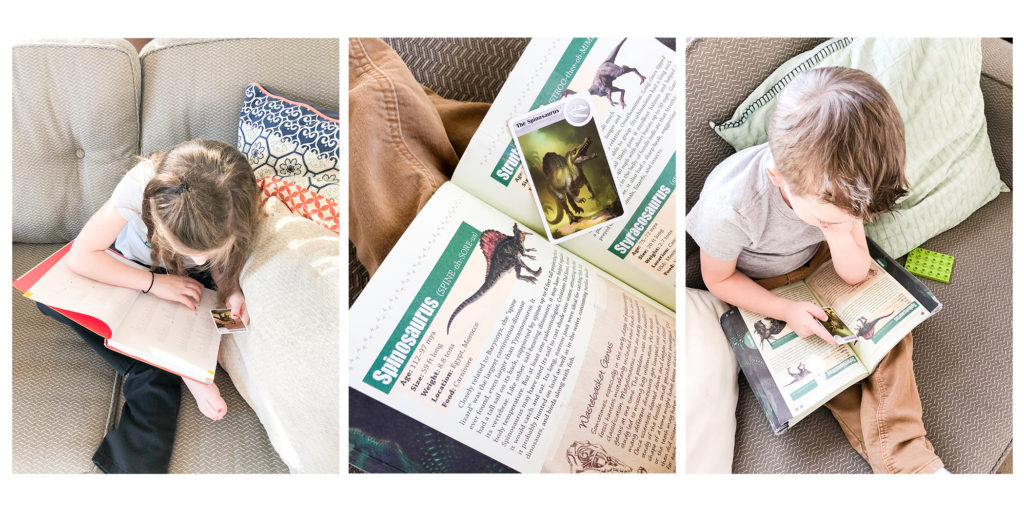
They each have research sheets to use to mark down what they’ve learned. For our son, he focuses on four main aspects. What is the animal, what does it eat, where did it live, and what is an interesting fact he learned while researching. Since he is only four-and-a-half, he is allowed to just draw a picture in the box depicting what he learned. He then orally explains to me what he “wrote” down on his research paper.
Our daughter is in the first grade so she does a bit more. Along with the above information, she is also encouraged to discover key features about the dinosaur’s apperance, how big it was, what predators it may have had, and when and where it lived along with three interesting facts.
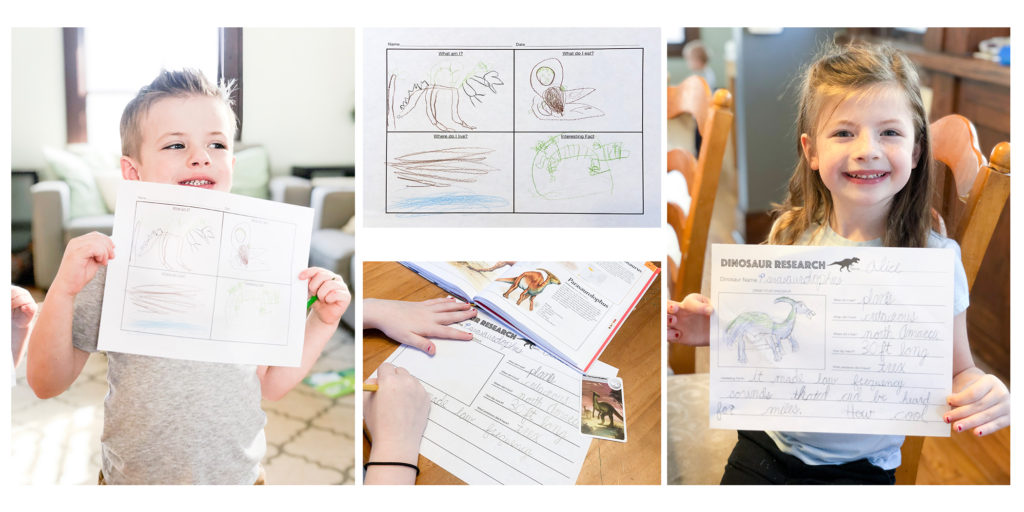
They may have to look through a couple books to find all of the information that they are seeking. This is all great, hands on, screen free, research practice. The learning process takes time and they are excited by the hunt for it.
Anytime that a game can be incorporated easily into a school project or activity, it’s always a win in my book. I definitely recommend checking out the CardLine series for both fun and education opportunities.
Along with the dinosaur version, this series also has an Animals and a Globetrotter edition. Each play similarly to the dinosaur game. The Animal version can even be incorporated with the dinosaur cards if that is of interest to you. They would also be a great starting off point for research projects as well.
If you would like to incorporate a research activity for your child the next time you play, you can use these research report templates I made for our kids. I’ve also included our standard animal research report template for general, non dinosaur, animals as well.
You can find CardLine Dinosaurs on Amazon HERE!
To download our research report sheets CLICK HERE!
For even more dinosaur gaming fun, check out our review of Dinosaur Tea Party!
Title: CardLine: Dinosaurs
Designer: Frédéric Henry
Artist: Gaël Lannurien
Publisher: Bombyx
Published: 2014
* This post contains affiliate links at no cost to you. To read my full disclosure policy click here.*


